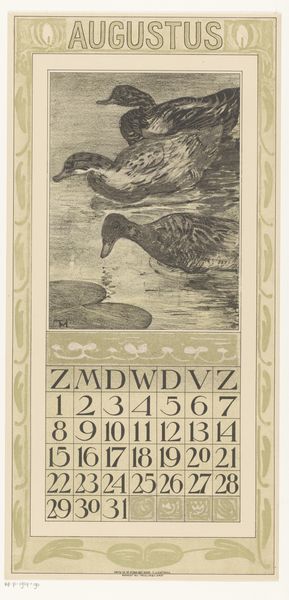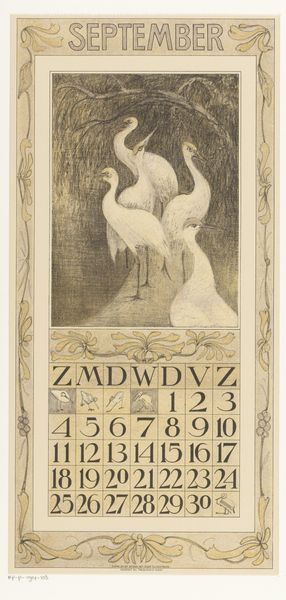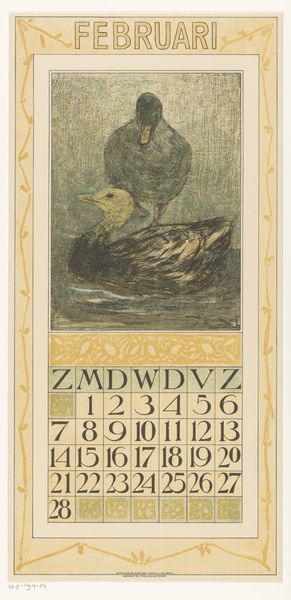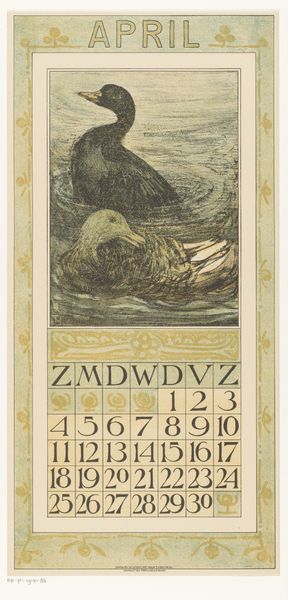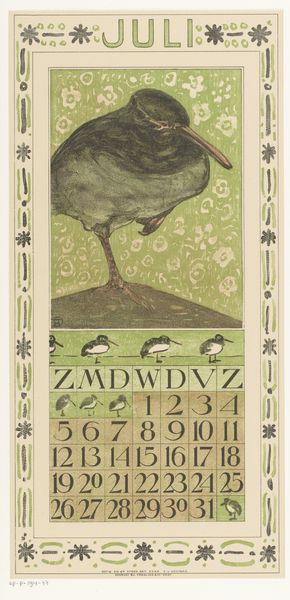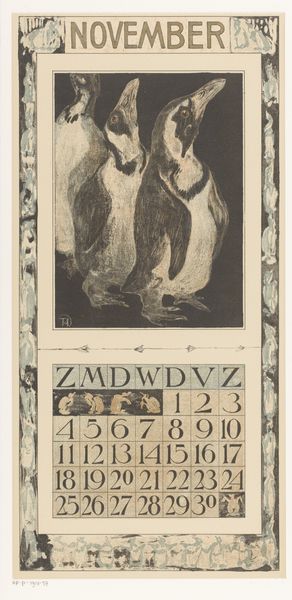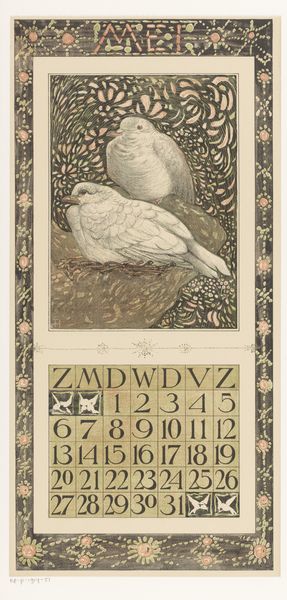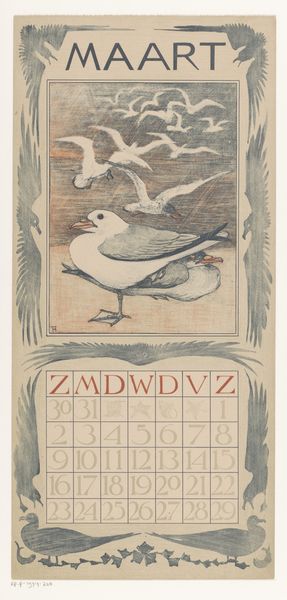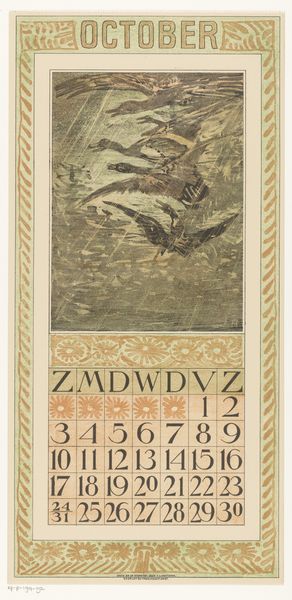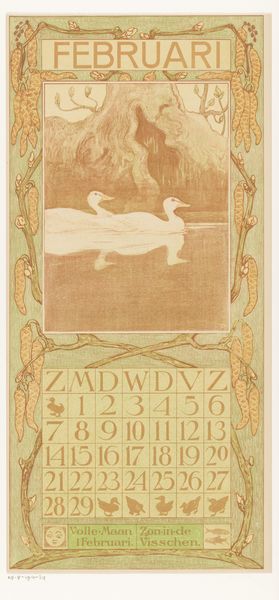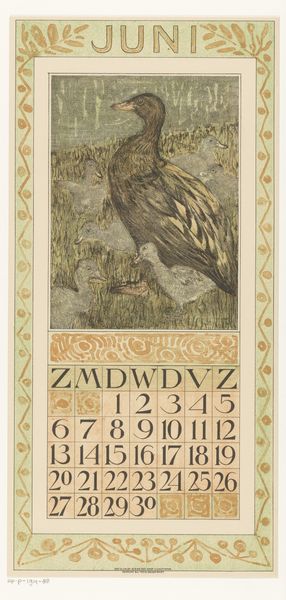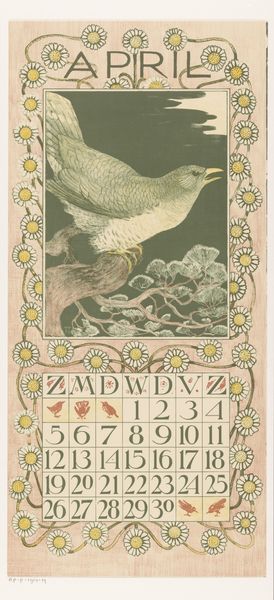
Dimensions: height 440 mm, width 210 mm
Copyright: Rijks Museum: Open Domain
Curator: Theo van Hoytema's "Kalenderblad juli met drie eenden aan de waterkant," or "July Calendar Page with Three Ducks at the Waterfront," created in 1908. He produced it using a woodcut, a type of print. Editor: The subdued, almost monochromatic palette lends it a feeling of gentle melancholy, doesn't it? And that ornate border feels simultaneously charming and, I don’t know, a little suffocating? Curator: The border is undoubtedly Art Nouveau, with its stylized flora. Considering Hoytema's interest in ornithology, those ducks become more than just a pleasant illustration. They connect to broader themes, I think. Calendar art provided insight into a slower rhythm of life that we almost miss today, don’t you think? Editor: Definitely. It evokes this romantic longing for simpler times, with an idealized pastoral setting. And what about those three ducks themselves? Do they hold a deeper significance? Three figures often have associations with wholeness, completion, especially in a family setting. Are the ducks metaphors? Curator: Perhaps Hoytema meant them to function that way. These calendar images allowed him to integrate both his artistic interests and more commercially driven work, to make art accessible and domestic. Remember, he lived during the era of significant urban expansion, so depicting animals in their natural habitat could reflect the nostalgic feelings for country life. Editor: True. I'm drawn to how that relates to folk imagery. Even in what was designed for the practical purpose of marking time, Hoytema smuggles this undercurrent of connection, that sense of familiarity, of archetypes emerging from some collective memory about where we belong in the world. He speaks in a language of symbols… Curator: Well said. These calendar works feel very grounded and calming amidst the whirlwind of modernism that swept across the globe at the beginning of the twentieth century. Editor: Absolutely, reflecting back on it, the art whispers a question: What did we gain and lose, on our accelerated path forward? The piece prompts a meditation.
Comments
No comments
Be the first to comment and join the conversation on the ultimate creative platform.
